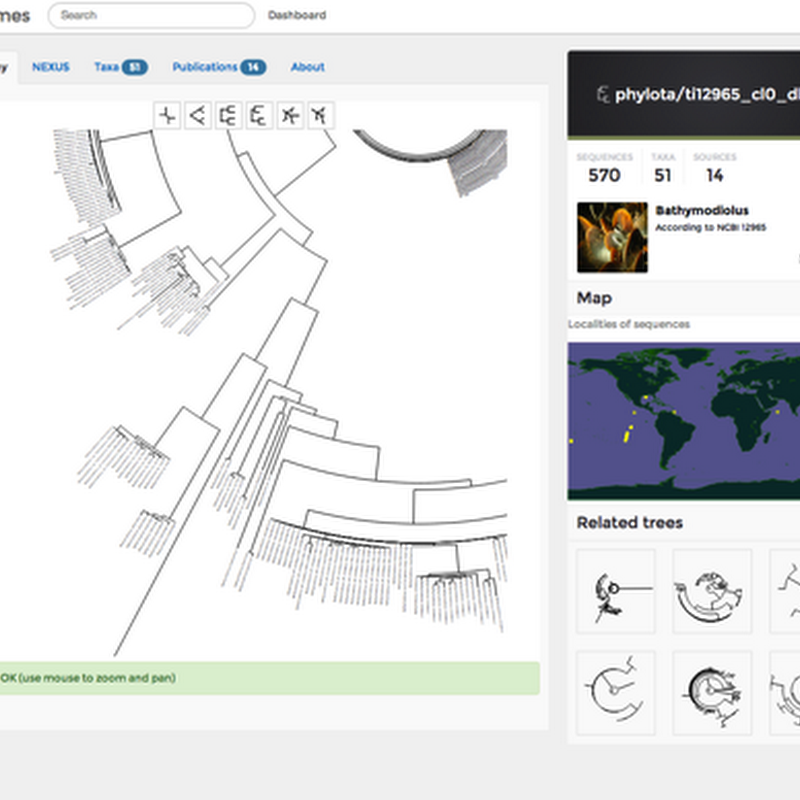I've created a short screencast showing some of the phylogenies in BioNames. If you want to see these for yourself here are the links:Ocypodinae (ghost and fiddler crabs) Osedax (bone worms)Agaonidae (fig wasps) BioNames and phylogenies from Roderic Page on Vimeo.
iPhylo

One of the things that didn't make last week's deadline for launching BioNames was the inclusion of phylogenies.

I've added a simple "dashboard" to BioNames to display some basic data about what is in the database. Apart from a table of the number of bibliographic identifiers in the database (currently there are 54,422 publications with DOIs, for example), there are some graphic summaries.

One consequence of having a database of literature with external identifiers such as DOIs is that we can plug into a bunch of external services to get additional information about a reference. For example, altmetric can take a DOI and display some article level metrics. As an experiment I've added code for altmetric badges to the web page in BioNames that displays publications.

BioNames (http://bionames.org) is live. Getting to this point was supported by funding from EOL as part of their Computable Data Challenge. The award from EOL is paying for Ryan Schenk to work on the interface and overall design of the web site, and over the last few weeks we've been working increasingly frantically to get things ready. "Ready" is a relative concept.

I've stumbled on a case where two different publishers have issued different DOIs for the same articles. In this case, Springer and J-State both publish the Japanese Journal of Ichthyology (ISSN 0021-5090). The following article:is published by Springer with the DOI http://dx.doi.org/10.1007/BF02914322, and this DOI is registered with CrossRef. J-Stage publish the same article, with the DOI (http://dx.doi.org/10.11369/jji1950.36.196).
This week promises to be *cough* interesting. The deadline for the BioNames project is the end of the week (May 31st), and all I have right now is a blank web page (gulp). Behind the scenes data is being cleaned, mushed, and reconciled, and CSS, Javascript, and HTML are being wrangled. It's going to be tight, but hey, what could possibly go wrong...?

I've been banging on about having citable, persistent identifiers for specimens, so was suitably impressed when Derek Sikes posted a comment on iPhylo that Arctos already does this. For example, here is a DOI for a specimen: http://dx.doi.org/10.7299/X7VQ32SJ. So, we're all done, right? Not quite.

Ideas on measuring the "impact" of a natural history collection have been bubbling along, as reflected in recent comments on iPhylo, and some offline discussions I've been having with David Blackburn and Alan Resetar.My focus has been at the specimen-level, with a view to motivation the adoption of persistent specimen-level identifiers so that we can citations of specimens over time (e.g., in publications and databases such as GenBank). Not only

Bob Mesibov (who has been a guest author on this blog) recently published a paper on data quality in in ZooKeys :In this paper Bob documents some significant discrepancies between data in his Millipedes of Australia (MoA) database and the equivalent data in the Atlas of Living Australia and GBIF (disclosure, I was a reviewer of the paper, and also sit on GBIF's science committee). This paper spawned a thread on TAXACOM, and also came up